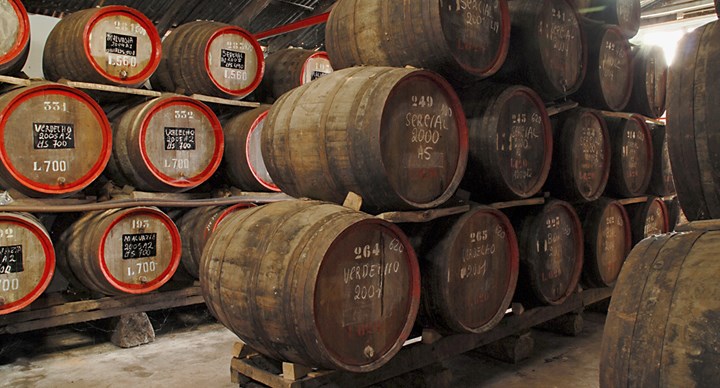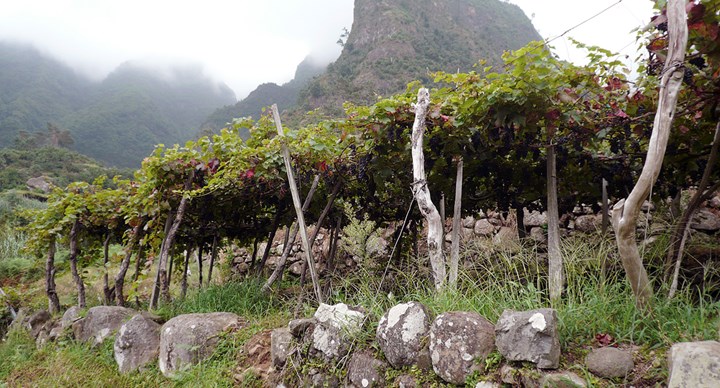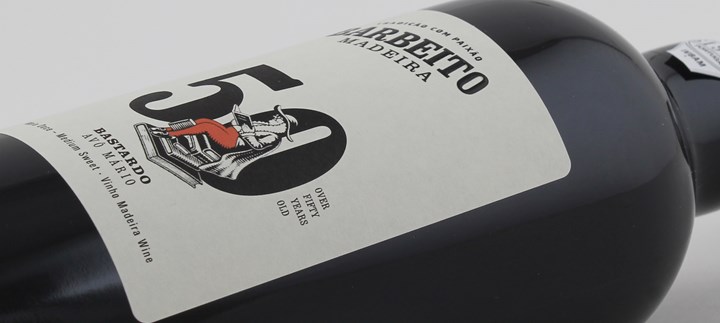
Which site would you like to visit?
By clicking the retail or wholesale site button and/or using rarewineco.com you are choosing to accept our use of cookies to provide you the best possible web experience.



Of the hundreds of companies who have produced and shipped Madeira over the past two centuries, only four remain in the hands of their original families: Blandy, Borges, D’Oliveira and Barbeito.
The first three of these are proud survivors from the nineteenth century—their legacy insured by having stockpiled old vintages during the Phylloxera epidemic of the 1870s.
The Barbeito family, on the other hand, entered the business much later, in 1946. Yet, their accomplishment is nearly as great, given not only the number of firms that have since vanished, but the fact that they entered the business during a particularly dark time for Madeira.
During World War II, production and sales ground to a virtual halt. The U.S. market disappeared because of a government ban on poorly made Portuguese glass bottles. And for six years, marauding U-boats made it nearly impossible to ship wine to Madeira’s most important market, the United Kingdom.
As a result, far more companies were leaving the business than were joining. But Mario Barbeito had faith in the future. He also believed—just as Charles Ridpath Blandy, H.M. Borges and João D’Oliveira had done decades earlier—that the value of great Madeira could only go up as it became older, and production of young vintages declined. And so, a former accountant, Barbeito went around the island buying substantial stocks of priceless old vintages from important families.
Barbeito saw those vintage wines as a nest egg for the future, and he was content to let the wines age. He wisely built the business in the early years around more modest Madeiras. It was left to his daughter Manuela—when she gradually took over the business from him in the 1970s—to begin selling her father's priceless old vintages.
Thanks to her efforts, now-famous Barbeito wines like 1795 Terrantez, 1834 and 1875 Malvasia, and 1863 Bual began to make regular appearances at auction in London. This built a lasting reputation for the Barbeito name among Madeira collectors.
“... the established star of this atmospheric Island (Madeira) ... is Vinhos Barbeito, whose super-pure, almost crystalline wines are made by the gifted Ricardo Freitas.”
- Jancis Robinson
In the early 1990s, Manuela Barbeito began to turn over the reins of the company to her son, Ricardo Freitas. Armed with a history degree from the University of Lisbon, Ricardo not only brought a deep respect for Madeira's classical roots, but he also brought new energy and new ideas to the company. One of these ideas was to restore the role that Madeira once had as a companion to food.
Of course, Ricardo is continuing his grandfather's and mother’s legacy of sourcing great old wines and preserving them for future generations. But he is also creating his own legacy with a series of innovations. His "Signature" Madeiras are crafted in small lots from historic vineyards, forgotten varieties, or particularly compelling growers. Freed from the homogeneity required in larger commercial releases, Ricardo is free to craft wines with remarkably distinctive characters.
“I previously described winemaker Ricardo Freitas as a “game changer” and I still espouse that opinion… What he achieves is a level of precision and delineation that is second to none, a lucidity of aromas and flavors that can be intoxicating.”
- Neal Martin, The Wine Advocate
These handcrafted wines combine the best elements of Madeira’s classical tradition with Ricardo’s own quest for purity and vineyard and varietal expression. Made in tiny lots – often from forgotten vineyards or nearly extinct varieites, their astonishingly graceful style has prompted British wine critic Jancis Robinson to call Barbeito the “Lafite of Madeira.”
Ricardo also joined with The Rare Wine Co. to create our pioneering Historic Series Madeiras, which have pumped enormous new vitality into the American market for Madeira.
Ricardo continues to innovate with wines like his compelling Island Dry and Island Rich Madeiras. Though based on Tinta Negra grapes, the former has the dryness of a fine Sercial, while the latter has the richness of a luscious Malmsey.
First conceived as Barbeito’s core offerings in the 5-year-old category, these two wines have slowly evolved into something even more special. While other producers make their 5-year-old wines by the estufa method (avoiding the expense of barrel aging), Ricardo ages his “Island” Madeiras by the same costly canteiro method employed for his vintage wines. He even includes a small percentage of Sercial grapes in Island Dry. As a result, the Island Madeiras offer extraordinary character at a miraculously affordable price.
Finally, Ricardo has been leading the island’s renaissance of dry table wines, which were its entire wine production prior to the advent of fortification in the 1750s. His crisp dry whites from Verdelho and Sercial, and delicate reds from Bastardo, offer further evidence of Ricardo’s enormous talents.














































New discoveries, rare bottles of extraordinary provenance, limited time offers delivered to your inbox weekly. Be the first to know.
Please Wait
Adding to Cart.
...Loading...


By clicking the retail or wholesale site button and/or using rarewineco.com you are choosing to accept our use of cookies to provide you the best possible web experience.

